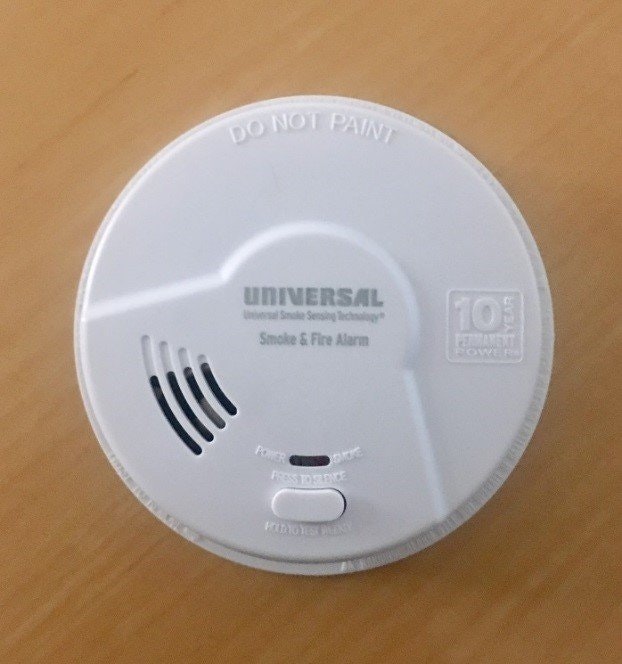Smoke Detectors
Most residential fire deaths are not from heat or flames, but from inhaling smoke and toxic fumes. Smoke is actually the particles of combustion generated by what is burning – paper, wood, chemicals, plastic, upholstery, or other fuels.
When a smoke detector senses smoke, an alarm automatically sounds. Most fatal home fires occur between 8:00 p.m. and 8:00 a.m. Fires often generate lethal amounts of unseen smoke and fumes well before flames are visible and before heat makes residents feel uncomfortably warm. As a result, many people who die in home fires are asleep and never wake up. When carefully purchased, installed, and maintained, smoke detectors can prevent such needless deaths.
Purchasing
When buying smoke detectors, check for the following:
- Laboratory label, insuring that samples of the model you are buying have been carefully tested.
- Alarm loud enough to awaken the family through closed bedroom doors.
- Malfunction signal, to warn you when batteries are weak or dead.
- Manufacturer’s warranty of at least five years.
- Ease in maintenance and cleaning.
Which Type?
Ionization – Contains a small amount of radioactivity that conducts electricity. Electric current flows continuously between two electrodes in the chamber. When smoke particles enter, they disturb the flow, causing the alarm to go off.
Photoelectric – Contains a beam of light and a photocell within the chamber. When smoke enters, it deflects the beam, causing it to strike the photocell and set off the alarm.

- Buy as many smoke detectors as it takes to give your home complete coverage.
- Chances of survival obviously increase with each detector that you have, but one on each level of the house is the absolute minimum.
- You should have a smoke detector in each bedroom, in the hallway close to each sleeping area and in heavily occupied areas like the living room.
- When bedroom doors are left open, you should have at least one detector in the hallway outside the bedroom area
Installation
- Follow the manufacturer’s installation instructions
- On the ceilings, mount the device away from corners and walls, which have dead air space nearby. About eight to ten inches is the recommended distance.
- On walls, install the detectors high, because smoke rises, and place them eight to ten inches away from corners and ceilings.
- Install smoke detectors at least three feet from vents, which might recirculate the smoke.
- Never place smoke detectors on un-insulated walls or ceilings. Extreme temperatures can ruin batteries and prevent smoke from reaching the detectors.
Maintenance Check List
- Test your smoke detector at least once a month by pressing the test button.
- Replace weak or worn out batteries at once.
- Never borrow smoke detector batteries for other uses.
- Keep extra batteries on hand.
- Change batteries at least once a year. A good reminder is when you change your clocks in the spring and fall: change your clock, change your battery.
- Dust and vacuum smoke detectors without removing the detectors cover.
- Never paint a smoke detector.
- Make sure smoke detectors are working when you return home after an extended absence.
Recall

For more information on the recall of Universal Security Instruments Alarms.
